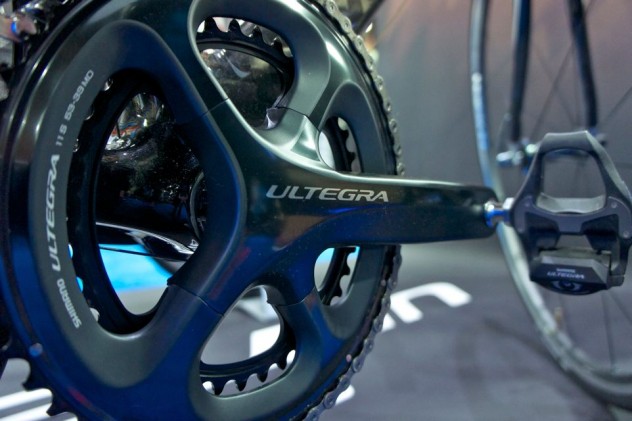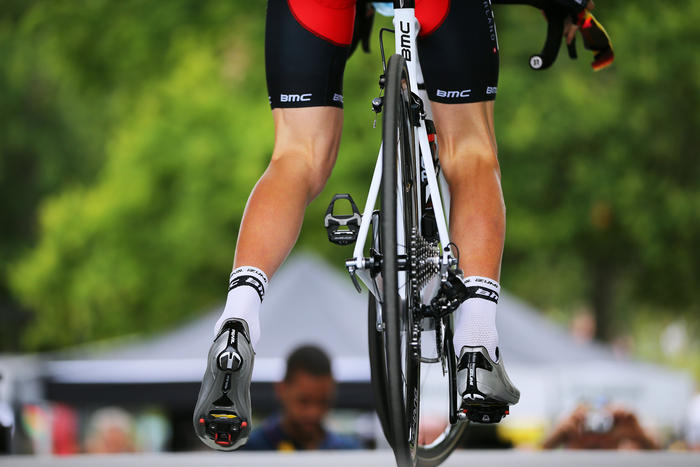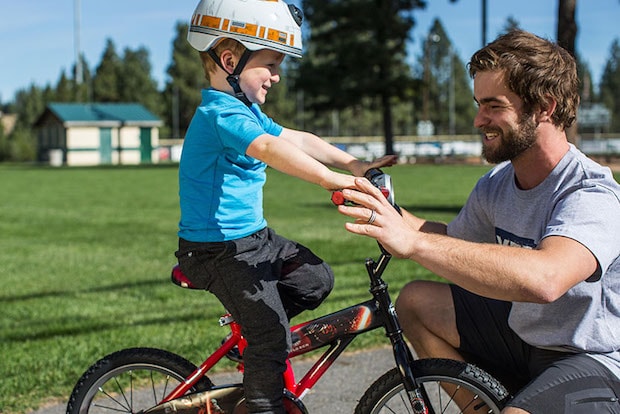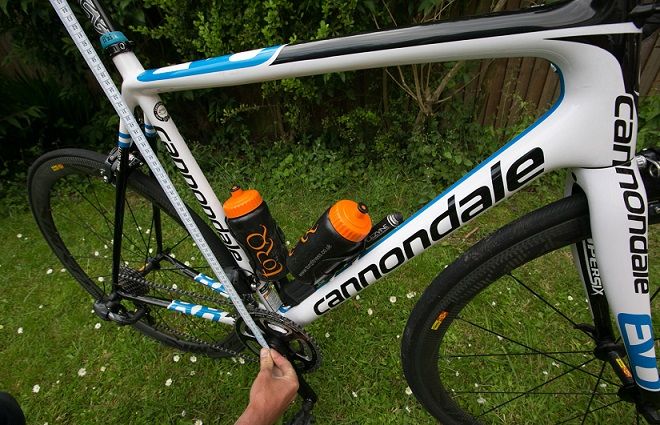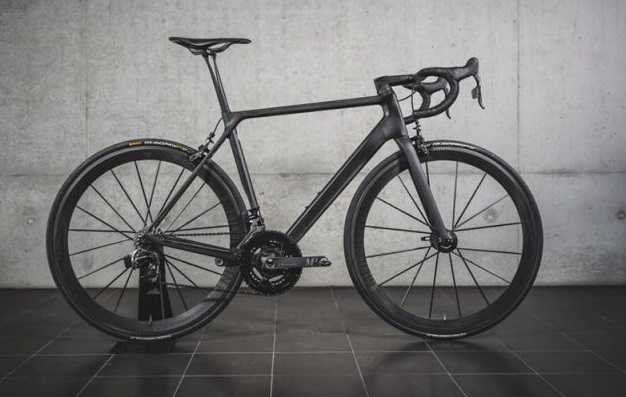The crank arm is important for efficiency and comfort. It’s the single biggest link to your bike in regard to performance, as it transfers your energy to the drivetrain. Crank arm length has been a source of debate for years. A debate that’s never been fully answered.
Cyclists come in all sizes, from under 5-foot, to well over 6-foot. Bicycle frames are available in 18 sizes, ranging from about 45 to over 60 cm. But only three sizes of cranks are commonly installed on production bikes, 170, 172.5, and 175 mm.
The crank is a lever in a highly-engineered machine. It rotates around endlessly, over and over. Crank arm length determines how far your foot travels, how many revolutions it makes, and how much leverage you have on the bottom-bracket. It would seem that crank arm length would be of utmost importance to bike designers, so why do they typically only use only three sizes?
The Sizes
The majority of road bikes are equipped with 170 or 175 mm cranks, and have been for at least the past 30 years. But if you look at the difference, in the sizes, it’s only about 3 percent between a 170 and a 175, virtually unnoticeable to the everyday cyclist. Pros might not even notice the difference unless distance riding or a time trial, and even then the difference isn’t really significant unless you’re counting in 100th’s of a second.
The Proportional Theory
The rule of thumb supports the theory that crank length is proportional to leg length. But some riders have really short legs, while others look like they could be competitive in the NBA. So why are cyclists with a plethora of leg length, stuck with such a small range of crank lengths?
Got Used to It
Most cyclists became accustomed with their current crank length. It’s probably because it’s the only crank they have ever used. But stats have indicated that for a majority of them, current crank length might be too long for them to achieve optimum performance on the bike.
Fit and Ignorance
Crank length is one of the most important factors that should determine bike fit. For example: seat and handlebar position are determined by pedal position, which is in turn, determined by crank length. The crank length-seat-height determines the knee and hip angles when the cranks are at the bottom and top of a stroke. Crank length-handlebar distance determines how close the knee comes to the chest, especially when tucked in the aero position. Bike fitters often ignore crank length as a variable, calculating their fit using the existing crank on the bike when it rolls through the door, ignoring the difference that crank length makes.
Long Cranks
One of the biggest differences in changing crank length is comfort. Taller riders, with longer legs, can benefit from a longer crank. They should immediately notice they’re turning a serious crank, instead of feeling like they’re pedaling a child’s bike. But a contrary example of wrong crank length is exhibited in hill climbing. For example, taller riders are not typically noted as good hill climbers, it’s due in part because they could be using cranks that are too short for them.
Short Cranks
Shorter cranks make cadence easier to achieve. Shorter riders, switching to a shorter crank, will be able to spin more comfortably. It might seem contradictory, but for shorter riders, shorter cranks also aid in power output, simply because of leverage.
Frame Question
If a longer crank extends the pedal lower to the ground, you have to reach it somehow, so lowering the seat is in order. If it’s a drastic change in crank length, the frame may not accommodate it. The distance from the ground to the pedal when it’s at it’s lowest point is one of the bigger considerations. The pedal might clear the ground riding normally on flat ground, but cornering is a different issue, or turning turning sharply when the toe of your shoe contacts the front tire.
Bottom Bracket Clearance
Part of the debate over crank arm length focuses on adequate pedal clearance from the ground. Most bike frame manufactures place the bottom bracket at about 10.5-inches from the ground, when measured to the center of the bottom bracket. That’s about perfect for most riders, with enough clearance in corners, and to prevent toes from catching the front wheel in tight turns.
Tires and Pedals
Small changes can add up, even when you’re dealing with millimeters. There are things that you can do to alter the bottom bracket clearance on your bike. Tires and pedals are two examples: Newer styles of clipless pedals have a lower profile and provide more ground clearance than older pedals. Tires can make a difference, higher or lower profiles change bottom bracket height to some extent.
Custom Cranks
Most cyclists run Shimano cranks, and as you know, their crank length selection is typically limited to three sizes. But there are other crank dealers out there — no pun intended — that produce longer and shorter cranks. Custom cranks are available up to 220-mm on the long side, and as small as about 85-mm on the short side, each graduating in 1-mm increments.
What’s Right For You
If you have trouble tucking into the aerodynamic position — it feels like you can’t breath — or find that you can’t get your cadence up as high as you would like it, you might be running too long of a crank. If have a lot of knee pain, or feel like you’re not getting what you’re supposed to for the amount of training you’re doing, experimenting with crank length can be beneficial.
Go Short
Problems with cranks that are too long are more likely than cranks that are too short. So if you have a choice, try switching to a shorter crank for starters. If you’re currently running a 170 or a 175 mm crank, try a 145 or a 150 — if you can get your hands on one.


